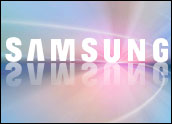
Apple may get more mindshare from consumers, but Samsung currently holds the lead when it comes to market share. The connected device market, which includes PCs, tablets and smartphones, grew 27.1 percent year-over-year in the third quarter of 2012. In that time Samsung maintained the top position with 21.8 percent market share based on shipments.
The figures are detailed in the Worldwide Quarterly Smart Connected Device Tracker report IDC released this week.
By the Numbers
In the third quarter, the 27.1 percent year-over-year growth came from shipments of 303.6 million units valued at US$140.4 billion. Samsung shipments equaled 66.1 million, or 21.8 percent of the market. Apple accounted for 45.8 million units, or 15.1 percent market share.
The top two manufacturers were followed in the distance by Lenovo (21.1 million units); HP (14 million units) and Sony (11 million units).
Samsung’s tablets and smartphones primarily run the Android OS, which competes directly with Apple’s iOS. Android, which is a Google OS, comprises a larger portion of the market than Apple’s iOS devices.
“Google outsells Apple like crazy, about three-to-one. Apple gets all the focus,” industry analyst Jeff Kagan told the E-Commerce Times.
However, with the recent release of two new devices, the iPhone 5 and the iPad mini, Apple has an advantage if it can keep up with demand.
“If you look at individual market share, I think Apple is going to do slightly better; they’re going to have the iPhone 5 and iPad mini,” report author Bob O’Donnell, program vice president for clients and displays at IDC, told the E-Commerce Times
Supply Keeps Up With Demand
Both the iPhone 5 and iPad mini have the potential to make this holiday season a very good one for Apple — that is, if Apple can keep up with demand. The two devices are currently selling as fast as Apple can resupply its stores and partner retailers.
“It is clear the consumer demand is outstripping the availability of the iPhone 5,” Ian Fogg, senior principal analyst of mobile media at IHS iSupply, told the E-Commerce Times.
The launch of new Apple products typically doesn’t coincide with the holiday season. The two new products may give Apple a bit of a lift that it wouldn’t normally see in Q4.
“Apple updates its portolio very occasionally,” said Fogg — “a one year launch cycle. It should have a big impact on their Q4 shipments.”
It could be a very Apple Christmas. A new handset, tablet and mini tablet on the market could put Apples under the tree this year.
“If you look at the Apple marketplace, they’re not really ordinary customers,” said Kagan. “Apple customers are hypnotized.”
Apple users often pledge an allegiance to the OS. It’s part marketing, and part investment in software, programs and peripherals that keep users on the platform.
“If you buy an iPad, iPhone or Mac, you share information across the cloud. It’s almost impossible to take that away,” Kagan said. “Apple advantage: It created customer loyalty — maybe the strongest in the world.”
Cultivating Loyalty
The same is starting to be said about other platforms, including Android.
“This is the new model of the industry,” said Kagan.
Samsung has poured money into creating the same kind of following that Apple enjoys. This year, the company put substantial advertising dollars behind the launch of the Galaxy S II.
“The S III launch this summer was every bit as glitzy as the Apple launch, or even more,” Fogg said. “Samsung has the ability to spend large amounts of money on advertising to support its launches.”
If Samsung’s strategy is to invest in its product launches, the company may continue to lead Apple in market share. Apple’s higher price tags have been acceptable in the U.S. and other developed markets, but to continue growth, the company may need to adopt a new strategy.
“The challenge for Apple is [that] where the biggest growth is occurring is outside the U.S.,” said O’Donnell. “Apple products are more expensive. If they want to maintain the kind of growth they’ve had, that is something to consider.”






















































Social Media
See all Social Media